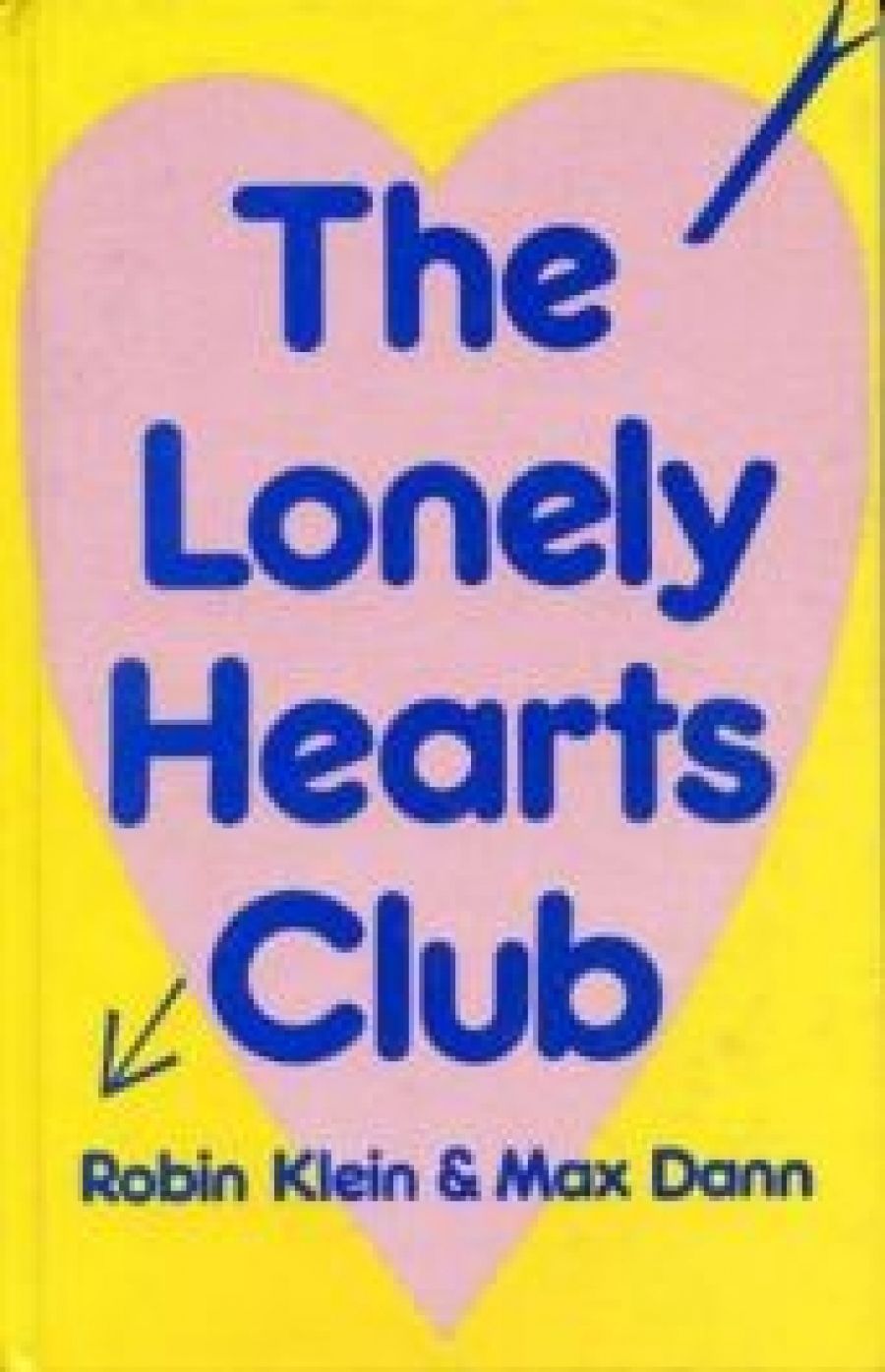
- Free Article: No
- Contents Category: Children's and Young Adult Fiction
- Review Article: Yes
- Online Only: No
- Custom Highlight Text:
Miracles can still happen. Robin Klein and Max Dann, two of the most popular and successful contemporary children’s authors, have combined forces to write a comedy with a boarding school setting which might, just possibly, start a whole new trend in Australian children’s literature.
- Book 1 Title: The Lonely Hearts Club
- Book 1 Biblio: Oxford University Press, 146 pp, $14.95
The public school story per se began at Rugby in 1857, with the publication of Thomas Hughes’ Tom Brown’s Schooldays. Its enormous popularity inspired a number of imitators, the most successful being Talbot Baines Reed (Fifth Form at St. Dominic’s, etc.). 1899 saw the publication of Rudyard Kipling’s largely autobiographical Stalky and Co., whose amoral adventures are still amusing today. Although the vein continued to be worked by other writers until well into the fifties it was running thin, and most people today associate school stories only with the antics of the obese and greedy Billy Bunter. They remained British middle class to the end, and never really caught on with Australian readers or writers.
Why, then, at this late date, The Lonely Hearts Club? Did Robin Klein discover Stalky’s adventures as a child, or those of Anthony Buckeridge’s Jennings? The book was originally her idea. She and Max were already good friends, and she had great admiration for his work and had wanted for some time to collaborate with him. They took the notion to Rita Scharf, their editor at Oxford. Rita was intrigued with their ideas for a story within a story, and interested in it as an experiment. So Max and Robin worked out the plot and then took it in turns, chapter by chapter, to write both the story and the accompanying dialogue between themselves.
The result is a very brief novel of less than 125 pages of good-sized print. Each of the sixteen chapters is prefaced with a letter from Robin to Max or vice versa which tell (principally in complaints and accusations) the subsidiary story of how the book was supposedly written; and sandwiched in between are ironic chapter headings giving advice on polite deportment, inspired by a little gem, published in 1937, in Max’s private collection: Christian Politeness, Counsels for Youth. It could well have come from St. Crispin’s itself.
St. Crispin’s, the setting for The Lonely Hearts Club, is the boarding school of Donovan and Scuff, fourteen-year-olds from Yarrawonga. Country boys, they are naive and socially inexperienced, but touchingly anxious to remedy all that: their great ambition is to meet a host of beautiful girls, and they invent the Club as a means to that end. They appropriate a disused toolshed for a clubhouse, pilfer decorations, and make up membership cards, but disasters abound: their letter to the lovely Fiona is intercepted by a teacher; the furniture supplied by Scuff’s fiendish sister is infant size; and the only girls they can interest in the club are Cheryl and Tracee-Ann, streetwise toughs who immediately take over.
There are some wonderful characters: Tracee-Ann in fluorescent pink and ‘an aggressive expression’; Rodney the wimp with his three brands of antibacterial talcum powder and five pairs of shoes ‘in neat rows, like sewerage outlets’ on top of the wardrobe; Rasputin the Mad Monk (very like the house-master Kind in Stalky) who roars at his hapless students but has a soft spot underneath; beautiful Fiona …
It is tempting to try to guess which parts each author wrote, but it doesn’t matter; the story reads smoothly and evenly from start to finish. Max’s previous books (Adventures with My Worst Best Friend, Bernice Knows Best, etc.) amply demonstrate his gift for comic situations and amusing dialogue, while Robin is the creator of Penny Pollard, Thing, and a host of other characters that have made her the most universally popular Australian children’s author. What young readers will think of The Lonely Hearts Club remains to be seen. Will it become a cult book and inspire a whole new trend in multiple-plot stories? Will it start a vogue for school stories? Or will there be a sequel, with Scuff, Donovan, and Rodney back from their holidays, and Max with a whole new collection of excuses for not having his share done on time?


Comments powered by CComment